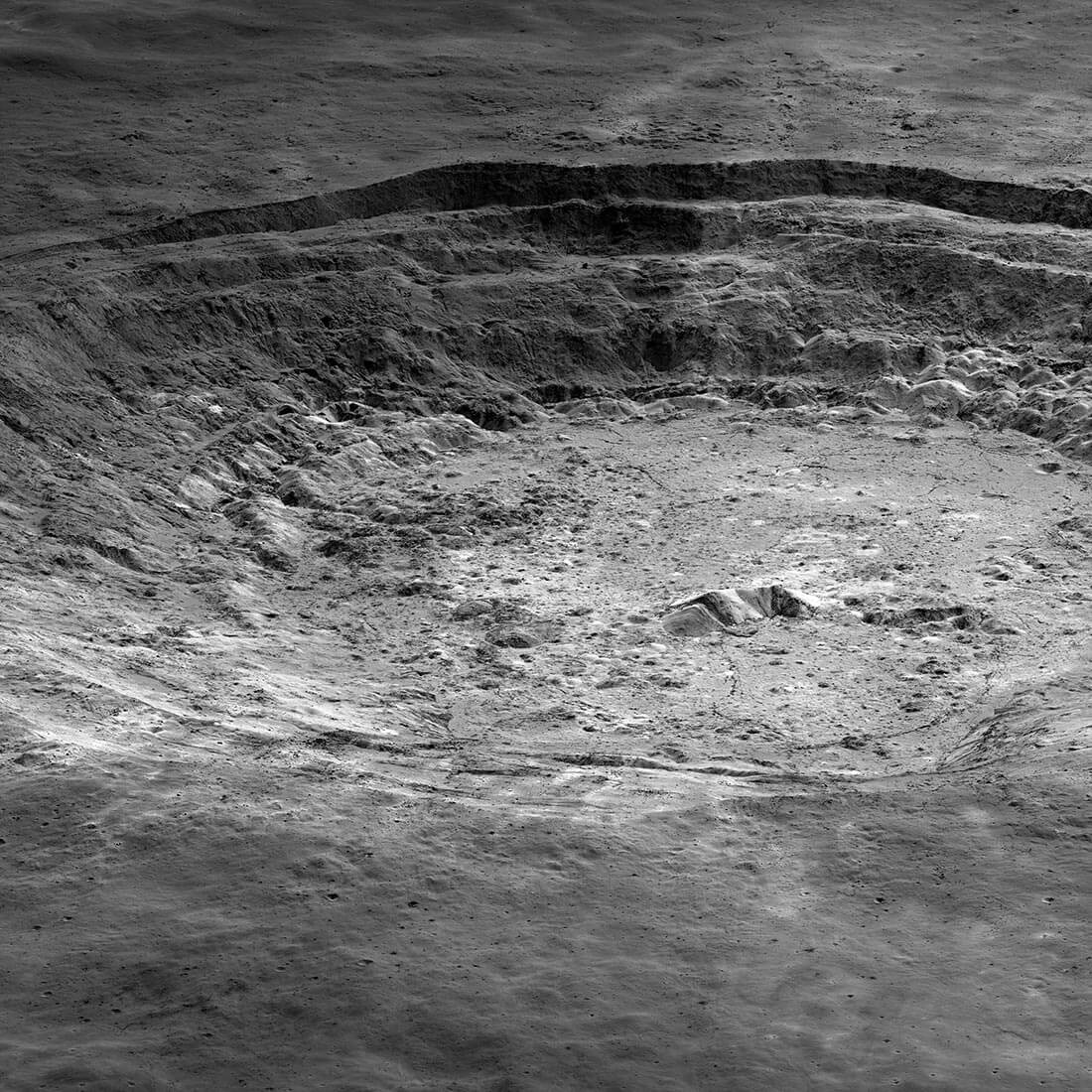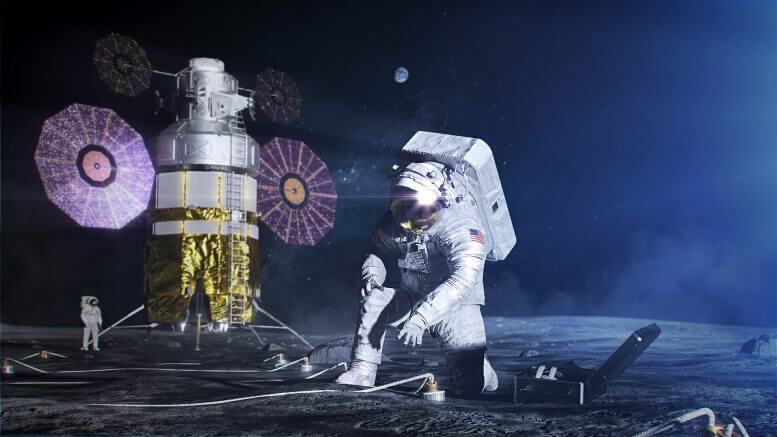Current estimates indicate that the upper ten meters of the lunar surface contain enough elemental oxygen to form enough O2 For every person on earth for the next hundred thousand years - more than enough for settlement on the moon!

When it comes to the future of space exploration, there are some practices that are essential for mission planners. The most important of them is the concept of using resources in place (ISRU), providing food, water, building materials and other essentials using local resources. And when it comes to missions that will refine the moon and Mars in the coming years, the ability to collect ice, regolith and other elements is critical to the success of the mission.
In preparation for the Artemis mission, NASA planners are focusing on finding the best way to produce oxygen gas (O2) from all the elemental oxygen trapped in the dust of the lunar surface (called the lunar regolith). In fact, current estimates indicate that the upper ten meters of the lunar surface contain enough elemental oxygen to form enough O2 For every person on earth for the next hundred thousand years - more than enough for settlement on the moon!
The moon does have a very thin atmosphere containing elemental oxygen, but it is so weak that scientists characterize the moon as a "body without air". But within the lunar regolith, the fine dust and rocks that cover the lunar surface, there are abundant amounts of oxygen in the lunar regolith rocks. This fine dust, also called "moon dust", penetrates in front of the moon and is the result of billions of years of collisions of meteors and comets.

According to John Grant, a lecturer in earth sciences at Southern Cross University, Australia, the oxygen content of the moon's crust is about 45%. But the oxygen is associated with oxidized minerals - especially silica, aluminum, iron and magnesium. The isotopic composition of these minerals is almost identical to the minerals on Earth, and this has led to theories that the Earth and Moon system formed together billions of years ago (the giant collision hypothesis).
But in order for the astronauts and future moon dwellers to be able to use this oxygen, it has to be taken out of all this regolith, and it requires a large amount of energy to break the chemical bonds. On Earth, the use of this process (called electrolysis) is common in the production of metals, when an electric current is applied to molten oxides to separate the minerals from the oxygen.
In this case, the oxygen gas is produced as a byproduct so that metals can be extracted for construction and manufacturing. But on the moon, the oxygen will be the main product, while the metals will be put aside as a by-product that might be useful - most likely for building residences. As Grant explained in a recent article in The Conservation, the process is simple but there are two major problems with fitting it into the space:
"He devours energy. To be applicable, it would need to be powered by solar power or some other energy source available on the moon. Extracting oxygen from Margolit will also require a lot of industrial equipment. We will first need to transform a solid metal oxide into a liquid form, by using heat, or heat together with solvents or electrolytes. We have the technology to do this on Earth, but transporting this equipment to the moon - and generating enough energy to operate it - will be a huge challenge."

23 תגובות
I would like to add to my previous post,
1. A nuclear reactor that produces electricity, treated properly and not like 100 years ago,
2. Iran has nuclear reactors to produce electricity, and they don't have a bomb (which they won't have), what to do, it's not the same, it's hard to reach the level of a bomb.
3. The reactor can be shut down in less than 5 minutes in the event of a disaster,
4. The reactor in Japan at the time of the huge earthquake, no nuclear damage was done, according to the measurements that day, on the fence of the plant, there was a radiation level like a mammogram test, and this also goes down within a few days, and there are no people on the fence just a reminder.
Let them build a nuclear reactor there, which is small and non-polluting and there is a lot of fuel for it, then they will have enough electricity to produce oxygen, they don't need solar energy which is expensive, cumbersome, turns into garbage in 25 years, and destroys a lot in the production process, 75% of France is powered by reactors Nuclear, and no! It can't explode! check…
Beauty. One match and everything will burn. What about nitrogen? Where will you get it from?
This. Order and peace reign in our world! And light and boring, and there is no war on the horizon, so they move people to the moon, and in another 100 years they will forget where they came from, they will want to achieve what is in our world, and here we have an inter-world war.
Now not boring.
How do you overcome loneliness and depression in Jericho?
Well, we destroyed the earth, let's go destroy the moon too
The huge amount of oxygen on Earth is not enough to develop the brain cells of the "scientists" who are trying to conquer the moon, and make them think reasonably. So they try to calculate the amount of oxygen that can be produced on the moon. Instead of investing money in conquering space, invest in developing solutions to our planet's problems... and one hour earlier is fine.
The real problem is that with the existing technology, the damage caused to the atmosphere at the time of takeoff, and the amount of trash left on Earth and created during the creation of the rocket and the fuel materials are so great that even a relatively small settlement expedition will leave behind a land unfit for biological life, not people, not animals, not even plants. No one will survive the "Exodus of the Earth" unless they develop "green" rocket propulsion methods, for example with nuclear energy - then we will see who is willing to fly to the moon on top of a rocket powered by a nuclear reactor knowing that it is a one-way flight
How do you overcome increased radiation from the sun due to a thin atmosphere? And what is the solution to many meteorites hitting the face of the moon?
Nice, maybe we can send Bill Gates, Bennett and Horowitz there. Leave us alone
The human race has 100 to 200 years left to exist and that's it. and that they will not work on you
There is a much simpler way that will be a little difficult to get started, but in the end there will be biological machines that automatically know how to use solar radiation (which is abundant on the bright side of the moon) to separate the minerals from the oxygen and release it as a gas, they call the process of forestry, and the machines are trees... or When there are many of these together a forest.
a spy? Sorry for the ignorance, someone explain what a spy is, it must be an uncommon word in everyday use
But how will they get there if NASA lost the plans?
What is Regolit?
Haha.. Stupid without stopping...
Keep believing in this psychopathic establishment, and you will fall into the trap again, as usual in history...
How does all this happen in Hollywood?
Who is producing the film?
Where have you been all these years?
Can a fly appear in space?
more and more .
A layer of 10 meters is too thin for such an activity. This means that you constantly have to move or alternatively transport thousands of tons over ever-increasing distances. Feasibility of quarrying exists only where the resource is concentrated in a limited area
The oxygen for breathing that will be produced from oxidized minerals - will be very expensive... but it will be possible to pay in Bitcoin...
I assume that 'elemental oxygen' means oxygen in elemental form? This is a bad translation
The regular moon…. You lost me. Condescending…
It is difficult to talk about extracting oxygen from the soil of the moon without at least mentioning the Israeli company Helios which is about to be sold for billions
why moon Long before thousands of Tesla cars will wander on Mars.